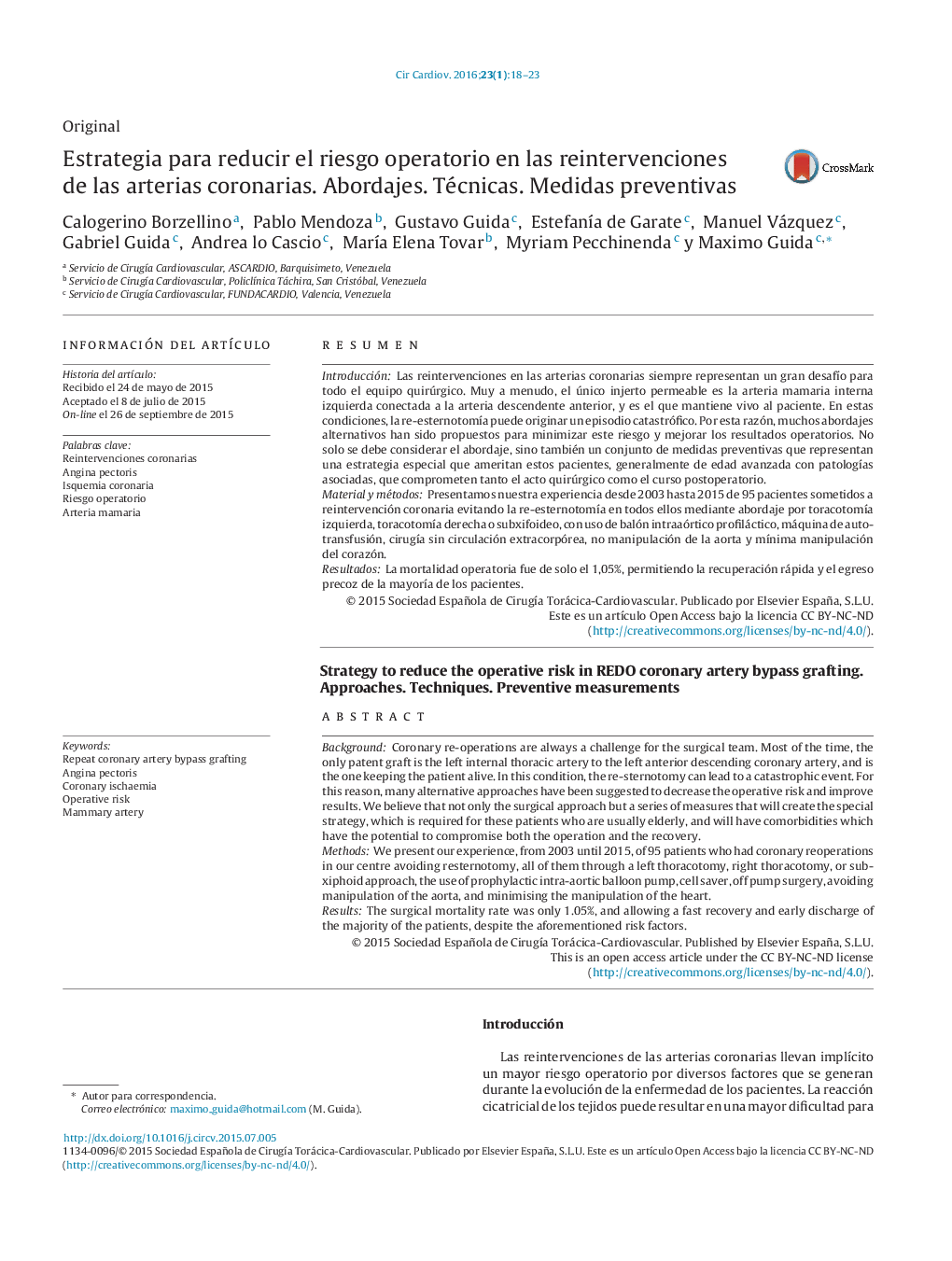| Article ID | Journal | Published Year | Pages | File Type |
|---|---|---|---|---|
| 2907944 | Cirugía Cardiovascular | 2016 | 6 Pages |
ResumenIntroducciónLas reintervenciones en las arterias coronarias siempre representan un gran desafío para todo el equipo quirúrgico. Muy a menudo, el único injerto permeable es la arteria mamaria interna izquierda conectada a la arteria descendente anterior, y es el que mantiene vivo al paciente. En estas condiciones, la re-esternotomía puede originar un episodio catastrófico. Por esta razón, muchos abordajes alternativos han sido propuestos para minimizar este riesgo y mejorar los resultados operatorios. No solo se debe considerar el abordaje, sino también un conjunto de medidas preventivas que representan una estrategia especial que ameritan estos pacientes, generalmente de edad avanzada con patologías asociadas, que comprometen tanto el acto quirúrgico como el curso postoperatorio.Material y métodosPresentamos nuestra experiencia desde 2003 hasta 2015 de 95 pacientes sometidos a reintervención coronaria evitando la re-esternotomía en todos ellos mediante abordaje por toracotomía izquierda, toracotomía derecha o subxifoideo, con uso de balón intraaórtico profiláctico, máquina de autotransfusión, cirugía sin circulación extracorpórea, no manipulación de la aorta y mínima manipulación del corazón.ResultadosLa mortalidad operatoria fue de solo el 1,05%, permitiendo la recuperación rápida y el egreso precoz de la mayoría de los pacientes.
BackgroundCoronary re-operations are always a challenge for the surgical team. Most of the time, the only patent graft is the left internal thoracic artery to the left anterior descending coronary artery, and is the one keeping the patient alive. In this condition, the re-sternotomy can lead to a catastrophic event. For this reason, many alternative approaches have been suggested to decrease the operative risk and improve results. We believe that not only the surgical approach but a series of measures that will create the special strategy, which is required for these patients who are usually elderly, and will have comorbidities which have the potential to compromise both the operation and the recovery.MethodsWe present our experience, from 2003 until 2015, of 95 patients who had coronary reoperations in our centre avoiding resternotomy, all of them through a left thoracotomy, right thoracotomy, or sub-xiphoid approach, the use of prophylactic intra-aortic balloon pump, cell saver, off pump surgery, avoiding manipulation of the aorta, and minimising the manipulation of the heart.ResultsThe surgical mortality rate was only 1.05%, and allowing a fast recovery and early discharge of the majority of the patients, despite the aforementioned risk factors.
